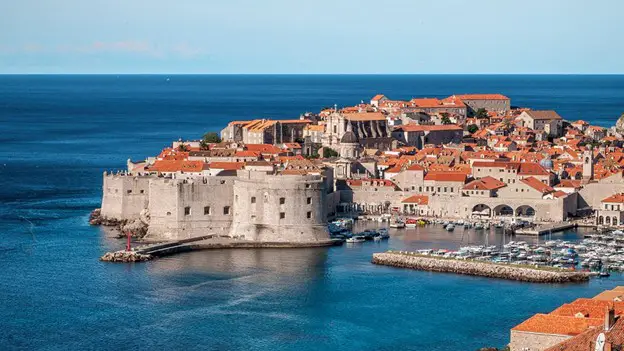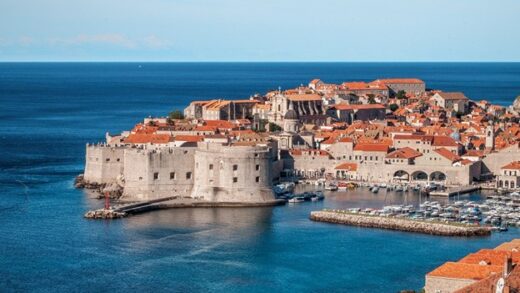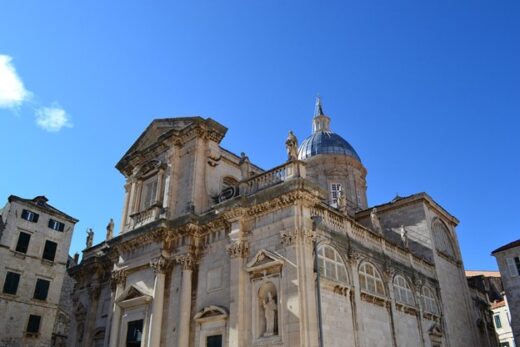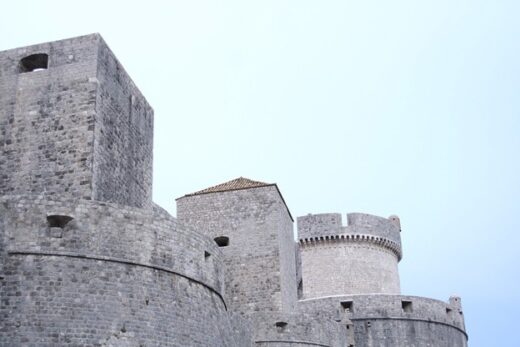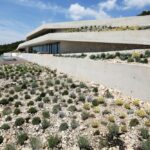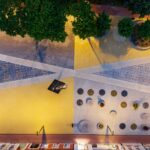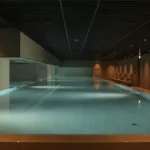The Best Architectural Landmarks in Dubrovnik, Croatia Building Development, Croatian Commercial Architecture,
Architectural Landmarks in Dubrovnik
1 Apr 2022
A medley of perfectly preserved medieval, Baroque, and Renaissance buildings can be found in Dubrovnik, Croatia. Dating back to the 7th century, you can still witness the evidence of Dubrovnik’s medieval infrastructure, street network, and city walls.
When the city was almost entirely destroyed by a devastating earthquake in 1667, the massive city walls remained almost untouched, a testament to their solid construction. And we celebrate this architectural heritage with our selection of the 5 best architectural landmarks in Dubrovnik:
Sponza Palace
A beautiful example of Gothic-Renaissance architecture. Also known as Divona, it was built by chief architect Paskoje Milicevic and stonemasons the Andrijić brothers from the island of Korcula.
Construction of this structure started in 1516 and was completed in 1522. This stunning fusion of Gothic and Renaissance architecture was one of the few buildings to survive the great earthquake.
With its Renaissance arches and windows, and Gothic triforium, you’ll find something to delight in with each step you take through this historic building. It is still in use today, housing the state archive.
Pile Gate
The Pile Gate consisted of inner and outer city gates with a Renaissance arch and semi-circular fortress. A stone bridge lead up to these gates, and a wooden drawbridge was heaved up employing a winch and counterweights.
In 1471. the city trench was been widened and a new triple-arched bridge was designed by Paskoje Milicevic in place of the former bridge. Between 1533-1537 the first bridge arch was demolished and the gate was redesigned with the movable wooden gate bridge inserted in the design.
Ancient architecture has had a major influence on modern buildings of western civilization. This can be seen in the widespread use of columns, domes, and arches that continue to this day.
Bridge arches were invented to helped to support the massive weight on them. This provided passage over rivers and allowed access between cities. Arches are still seen in modern architecture, in the Robert Street Bridge which runs over the Mississippi River in the US.
Of course, many new styles of bridges exist today. Look no further than the Dubrovnik Bridge, later renamed The Bridge of Dr. Franjo Tuđman. This marvel, one of the most spectacular floating bridges in the world, was built in 2002.
The modern cable-stayed bridge carries the D8 state road at the western approach to Dubrovnik, Croatia across Rijeka Dubrovačka near Port of Gruž. It is 518 meters long and 50 meters high.
Dubrovnik Cathedral
Do not let a tour of historic Dubrovnik architecture end without a visit to this fascinating example of baroque architecture.
This 12th-century Romanesque-style cathedral was largely destroyed by the 1667 earthquake. Meanwhile, the decorative and theatrical Baroque style of architecture that originated in Italy was spreading across Europe.
The Senate of Dubrovnik enlisted the help of the Italian architect Andrea Bufalini of Urbino, who produced a Baroque style model for the new church. Several other architects worked to complete the new cathedral over the following three decades.
Construction was completed in 1713 by the Dubrovnik architect Ilija Katičić. Thie Dubrovnik Cathedral is a beautifully preserved testament to the Roman Baroque aesthetic practiced by Bernini, Carlo Fontana, and other 17th-century architects.
Fort Revelin
One of the best ways to see the city is from the water, as it gives you an entirely different perspective. Rent a boat in Dubrovnik and cruise around the coast to see it the way it looked to explorers in ancient times. One of the most impressive sights on your boat trip will be Fort Revelin.
The name derives from the word ravelin, meaning a triangular fortification or detached outwork, located in front of the inner works of a fortress. This design is the oldest and most important outer work of a bastion fortification system.
Overlooking the old Harbour it is the largest of the old-town forts. Built in 1463, this fortress protected the eastern gate of the city. But threats of Venetian attack prompted the Senate to strengthen it.
An experienced fort builder, Antonio Ferramolino, was entrusted with the task of building a new, stronger Revelin. It took 11 years to build and was completed in 1549.
When looking out from the Minceta Tower, you will see its irregular quadrilateral shape. But this became the strongest fortress of Dubrovnik and was one of the very few structures not destroyed by the earthquake of 1667.
Minceta Fortress
Originally built by Nicifor Ranjina in 1319. it was later adapted to its current circular form by the renowned Renaissance architect Michelozzo Michelozzi from Florence and Juraj Dalmatinac from Croatia.
This magnificent tower is one of the most attractive fortifications in the world. In 1979, Dubrovnik was declared a UNESCO World Heritage Site, in recognition of what remains of its magnificent medieval architecture.
5 Best Architectural Landmarks in Dubrovnik, southern Croatia
Many historic Dubrovnik landmarks, due to their well-preserved architecture, have been immortalized in film productions. If you are a Game Of Thrones fan you will recognize many locations in this city. The base of Minčeta Tower was also used as a filming location for the series.
5 Best Architectural Landmarks in Dubrovnik images / information received 010422
Croatia Architecture
Contemporary Croatian Architectural Projects
A recent Croatian building by 3LHD Architects on e-architect
ResoLution Signature Restaurant Interior, Rovinj
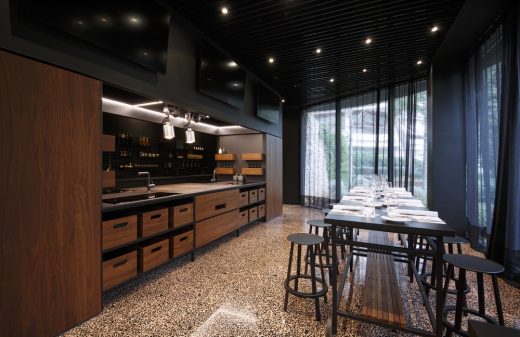
photo : Jure Živković
Croatian hotel building by 3LHD Architects
One Suite Hotel, Mlini, Srebreno
Architect: 3LHD
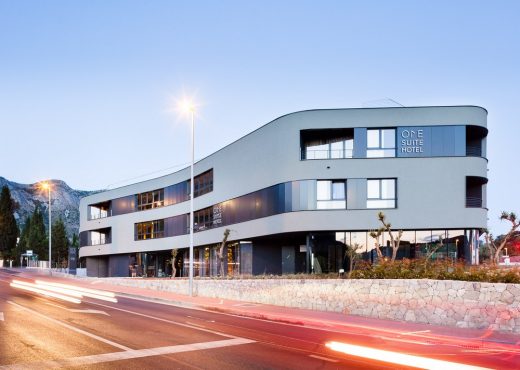
photograph : Marko Ercegović
Solta Island Resort – Rotating Hotel
Design: Studio RHE
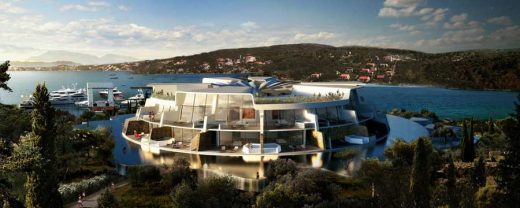
image from architects
Croatian Architecture – Selection
Comments / photos for the Architectural Landmarks in Dubrovnik page welcome
Website: Croatia

